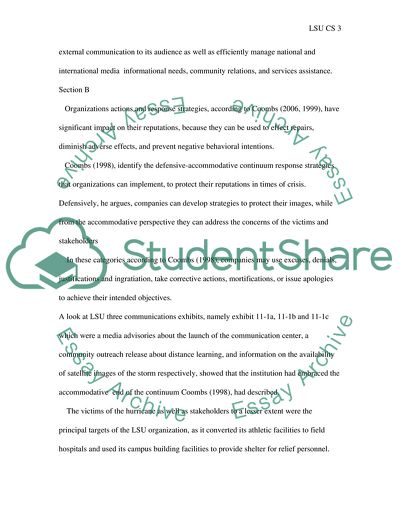Cite this document
(Hurricane Katrina and Louisiana State University Case Study Example | Topics and Well Written Essays - 1500 words, n.d.)
Hurricane Katrina and Louisiana State University Case Study Example | Topics and Well Written Essays - 1500 words. https://studentshare.org/environmental-studies/1755329-analysis-of-a-case-study-and-theoretical-application
Hurricane Katrina and Louisiana State University Case Study Example | Topics and Well Written Essays - 1500 words. https://studentshare.org/environmental-studies/1755329-analysis-of-a-case-study-and-theoretical-application
(Hurricane Katrina and Louisiana State University Case Study Example | Topics and Well Written Essays - 1500 Words)
Hurricane Katrina and Louisiana State University Case Study Example | Topics and Well Written Essays - 1500 Words. https://studentshare.org/environmental-studies/1755329-analysis-of-a-case-study-and-theoretical-application.
Hurricane Katrina and Louisiana State University Case Study Example | Topics and Well Written Essays - 1500 Words. https://studentshare.org/environmental-studies/1755329-analysis-of-a-case-study-and-theoretical-application.
“Hurricane Katrina and Louisiana State University Case Study Example | Topics and Well Written Essays - 1500 Words”. https://studentshare.org/environmental-studies/1755329-analysis-of-a-case-study-and-theoretical-application.


